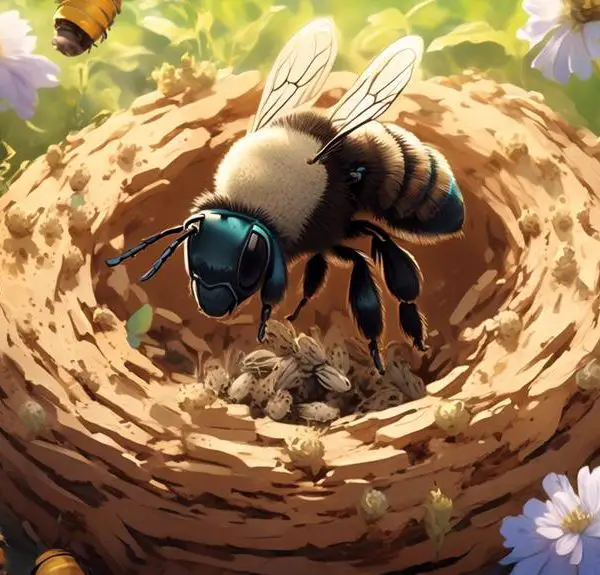Overwhelmed by the buzz about mason bees damaging your home? Dive in to uncover the surprising truth behind these industrious insects.

Do Mason Bees Destroy Your House?
Don't let the buzz around mason bees drill a hole in your peace of mind. These industrious insects, known for their solitary nature and non-aggressive behavior, have been sparking debates among homeowners and environmentalists alike.
The question boils down to this: are they friends who pollinate your garden, or foes that burrow into your wooden structures causing untold damage? But before you swat away at these critters, remember, not all that buzzes is harmful.
Hold on to your hats, because the answer might just surprise you.
Key Takeaways
- Mason bees do not cause structural damage to wooden structures.
- They utilize pre-existing cavities for nesting and do not bore into wood.
- Mason bees play a beneficial role in pollinating plants.
- Homeowners can take preventive measures such as keeping wood surfaces painted or varnished and installing metal or plastic netting to deter Mason bees.
Understanding Mason Bees
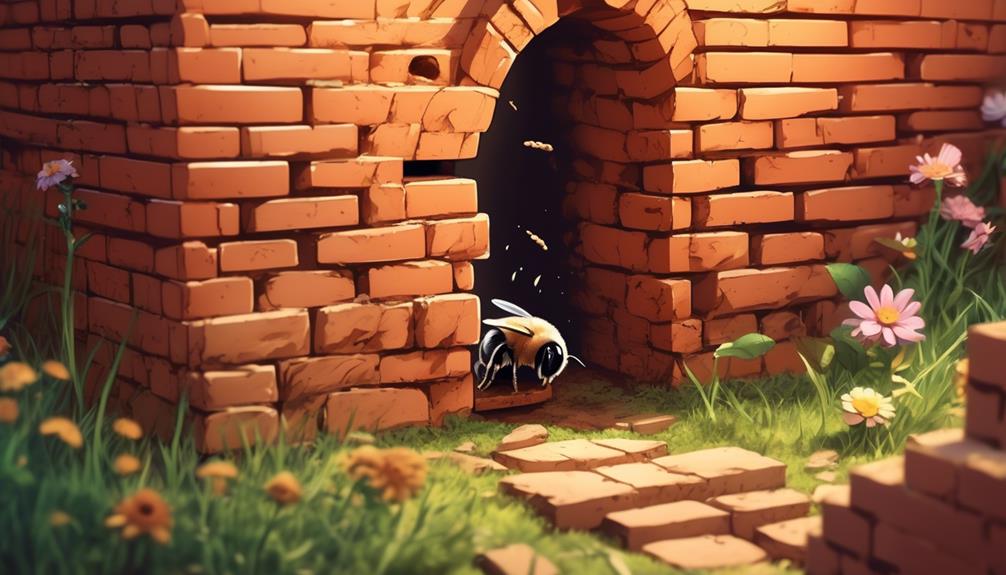
Ever wondered what's the buzz about Mason bees? They're not your typical honey-making bees, but they're vital for our ecosystem. Mason bees, also known as Osmia bees, are solitary creatures, which means each female is fertile and constructs her own nest.
Unlike honey bees, they don't live in colonies. They're named 'Mason' because of their unique nesting behavior. They use mud or other malleable materials to build their nests, often in crevices or pre-existing holes. This is where they lay their eggs, each in a separate cell with a supply of pollen for the larva to feed on.
Mason bees are super-efficient pollinators. They carry pollen on their abdomen, and since they aren't as meticulous cleaners as honey bees, a lot of the pollen gets transferred from flower to flower. This makes them a gardener's best friend. However, they're non-aggressive and only sting when threatened.
Understanding their behavior, you'll appreciate their presence in your garden. They won't destroy your house, but enhance your plants' productivity. So, instead of fearing them, consider providing a safe space for these helpful pollinators. They're the unsung heroes of our ecosystem.
Mason Bees Vs. Other Bees
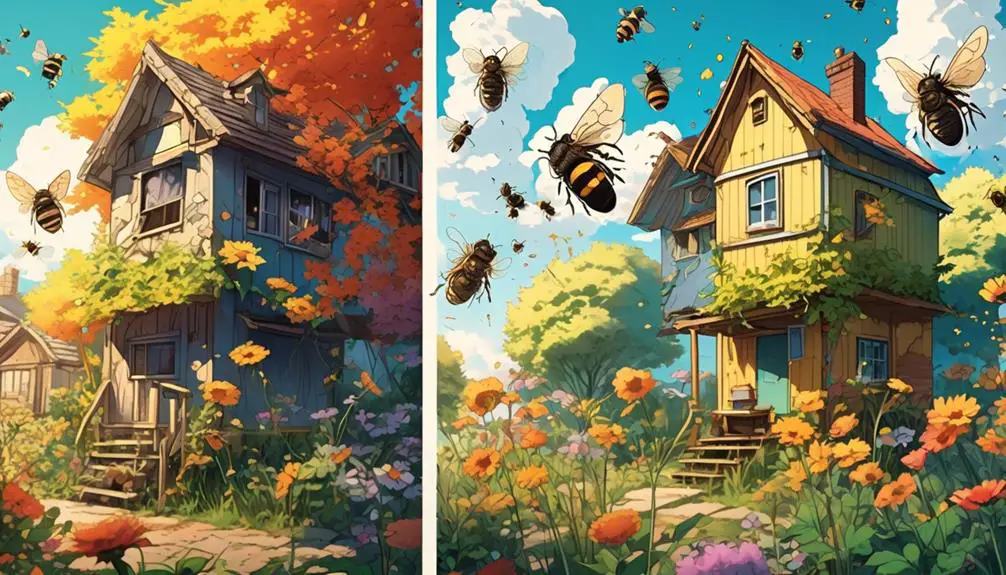
While appreciating the unique characteristics of Mason bees, it's equally important to understand how they stack up against other bee species in terms of behavior, nesting, and pollination efficiency.
Unlike honey bees or bumblebees, Mason bees are solitary creatures. They don't live in colonies, and each female is fertile, responsible for her own nest. Instead of building wax combs, they utilize existing holes in wood or hollow stems and seal their cells with mud, thus earning their name.
In terms of behavior, Mason bees are less aggressive. They rarely sting unless they're in real danger, making them safer around children and pets. However, they aren't honey producers, which sets them apart from honey bees.
The real power of Mason bees lies in their pollination efficiency. They're considered super pollinators, meaning they can pollinate many more plants in a shorter time compared to other species. This is due to their habit of visiting multiple plants in a single trip, unlike honey bees, who tend to stick to one type of plant.
Mason Bees and Their Habitat
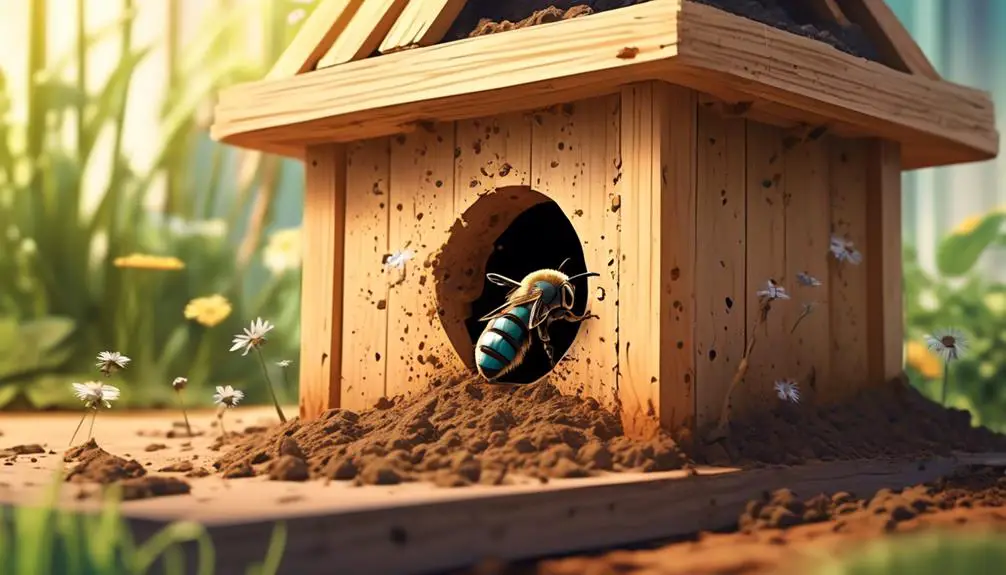
Nestled within your garden, you'll find the natural habitat of Mason bees, which is typically in hollow stems, wood holes, or reeds, where they can construct their nests in peace. Unlike honey bees, which form complex hive systems, Mason bees are solitary creatures. They don't build communal hives, but instead prefer solitary confinement within their selected nesting sites.
They're named 'Mason' due to their unique nesting behavior. They use mud to form partitions within their nests, creating individual cells for their offspring. Each cell is stocked with a mix of pollen and nectar, and then sealed with a layer of mud, ensuring the larvae have sufficient nutrients to develop.
The ideal habitat for Mason bees has a plethora of these nesting opportunities and a rich supply of flowers for pollen and nectar. Being non-aggressive and excellent pollinators, they're beneficial for your garden. However, they won't cause structural damage to your house, as they can't excavate wood but only use existing cavities.
Understanding their habitat can help you appreciate these industrious pollinators and ensure you're not mistakenly attributing any house damage to these harmless creatures.
The Impact on Wooden Structures
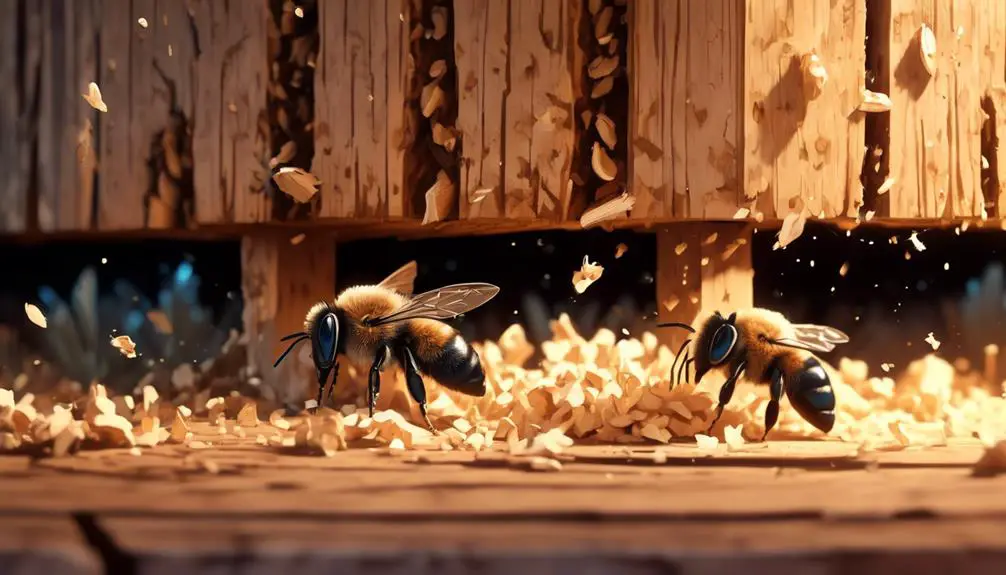
Despite the occasional concern, you'll find that Mason bees pose no threat to your wooden structures, as they lack the ability to bore into wood and only utilize pre-existing cavities for nesting. They are harmless to your home's integrity and, in fact, play a beneficial role in our ecosystem by pollinating plants.
Contrary to popular belief, Mason bees do not chew or tunnel through wood. Instead, they repurpose existing holes left by other insects or natural weathering. Their nesting habits are unobtrusive and don't result in any structural damage.
To further illustrate this, consider the following table:
Mason Bee Behavior | Impact on Wooden Structures |
|---|---|
Do not bore into wood | No structural damage |
Utilize existing cavities for nesting | No additional holes |
Repurpose holes left by other insects | Natural recycling |
Preventive Measures for Homeowners

In safeguarding your home against Mason bees, understanding certain preventive measures can be highly beneficial.
It's crucial to know that these bees prefer untreated, exposed wood. Therefore, keeping your home's wood surfaces painted or varnished can deter them. This protective coating prevents the bees from drilling into the wood, disrupting their nesting process.
You can also install metal or plastic netting over areas that are prone to bee activity. The netting should have mesh small enough to prevent the bees from reaching the wooden surfaces.
If you've already noticed holes, don't rush to fill them immediately. Chances are, they're already occupied by bee larvae. Instead, wait until late fall or winter when the bees have left, then fill the holes with a wood filler or caulk to prevent re-infestation.
Another effective preventive measure is to provide an alternative nesting site for the bees. Install a mason bee house in your yard. These non-aggressive bees are excellent pollinators and are beneficial to the environment. By providing a suitable habitat, you're not only protecting your home but also supporting these useful insects.
Conclusion
In conclusion, you needn't fret over mason bees destroying your house. Unlike carpenter bees, they don't bore into wood but rather, seek pre-existing holes for their nests. They're great pollinators and pose no threat to your wooden structures.
However, it's wise to take preventive measures, like sealing gaps and holes, to prevent any unwanted nesting. Being informed about these beneficial insects can help co-existence without worry.


